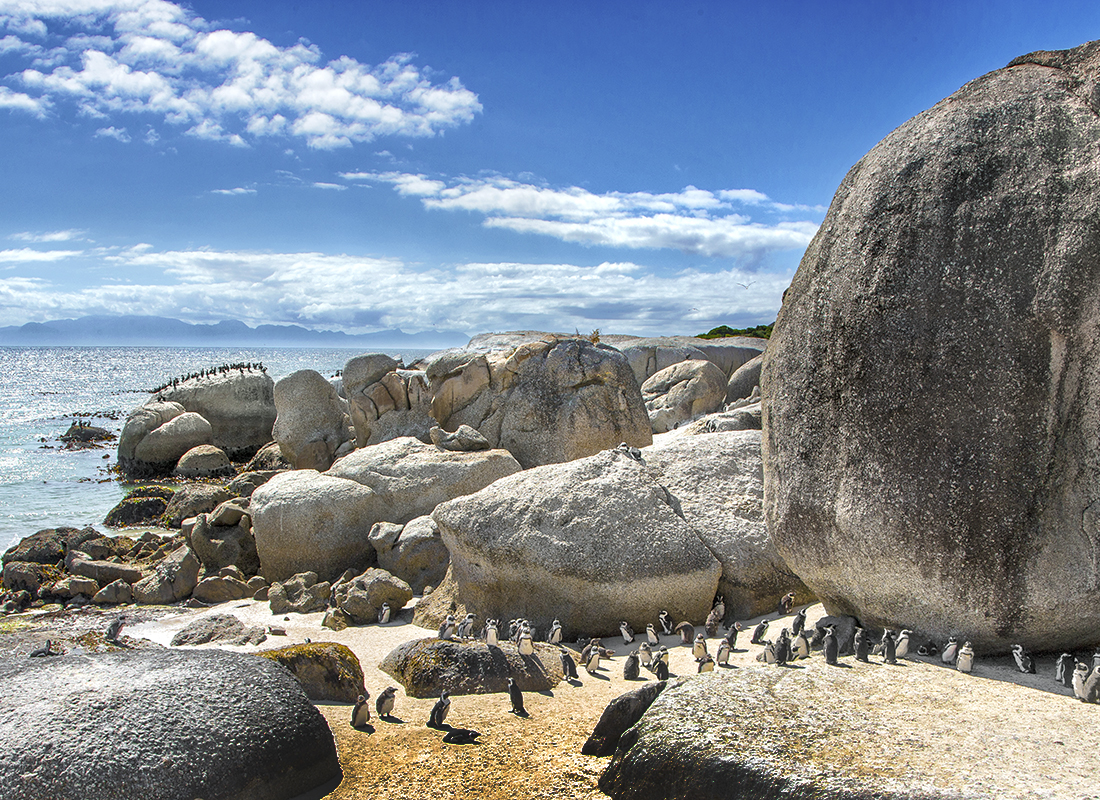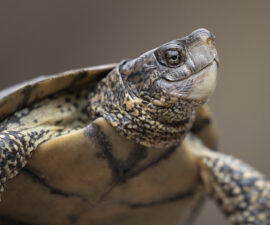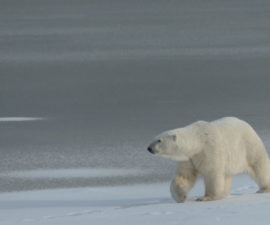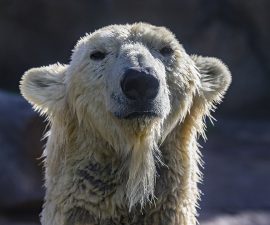Zoo staff from our bird department went to South Africa to help SANCCOB rehabilitate African penguins. These birds need help rebounding from a population decline.
BY Karyl Carmignani
Photography by Ken Bohn
Videography by Dustin Trayer
“It was long days of hard work that was stinky and smelly, but it was satisfying to know that if we weren’t there doing this, these animals would not survive.”
— Joop Kuhn, San Diego Zoo Animal Care Manager
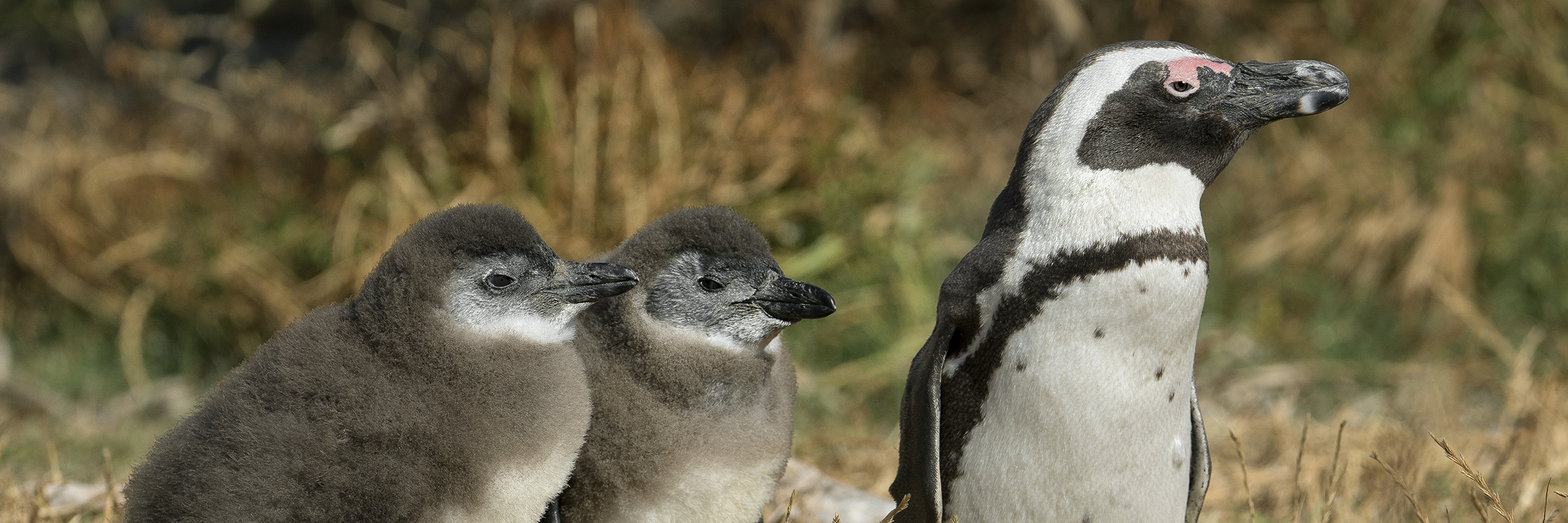
FLIGHTLESS WONDERS
Once one of southern Africa’s most abundant seabirds, the pint-sized African penguin Spheniscus demersus has plummeted from an estimated 1 million breeding pairs to only about 25,000 breeding pairs today. The decline is largely due to the commercial harvesting of the birds’ eggs for food and their guano to sell as fertilizer. These practices ceased toward the end of the 20th century, but the damage was done. To help keep the African penguin (and other seabird) populations afloat, a local organization called the Southern African Foundation for the Conservation of Coastal Birds (SANCCOB) has been rescuing, rehabilitating, and releasing ill, injured, abandoned, and oiled seabirds back into their habitat, including the resilient African penguin.
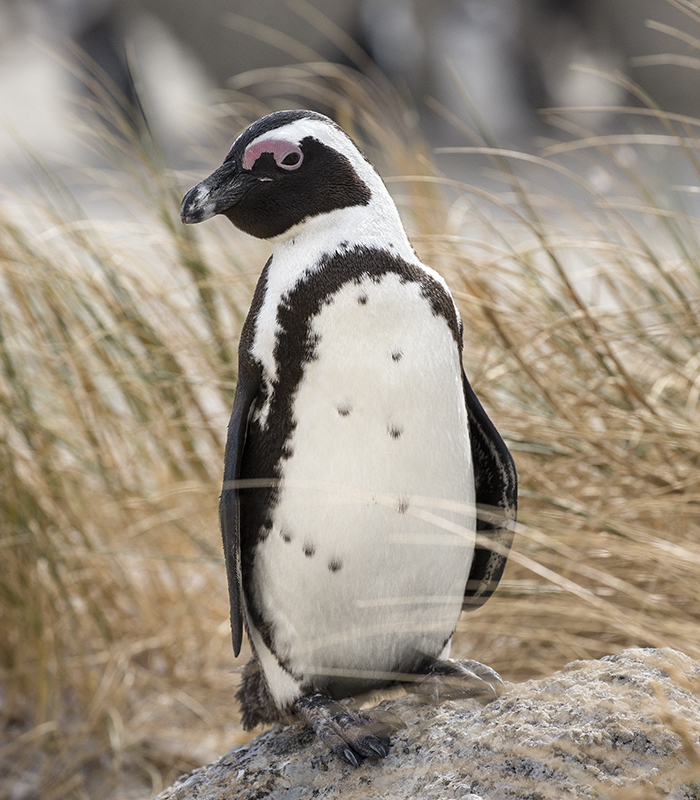
ON THE ROCKS
These swift swimmers also spend time on the rocky shoreline, in vast colonies.
As part of San Diego Zoo Global’s strategic plan to lead the fight against extinction, and sustain momentum through collaboration and support of urgent conservation, animal care staff from our bird department spent most of last November in South Africa helping SANCCOB in their rehabilitation efforts. “Rehabilitating African penguins takes concentrated, hands-on care, and we put in a lot of long days while working at SANCCOB,” said Joop (pronounced YO-pea) Kuhn, San Diego Zoo animal care manager.
“The work of saving African penguins is critical to the survival of the species, but it’s also important to ensure a healthy ecosystem.” He explained that the birds’ all-important guano is nitrogen-rich and helps other aquatic marine life grow. It is also the ideal substrate for penguin nests on the rocky, unforgiving shorelines. “Bird guano is the perfect insulator for the penguin eggs, protecting them from heat and predators,” explained Ann Knutson, senior keeper at the Zoo, who went to South Africa. “It also repels ticks and other harmful insects from the birds.”
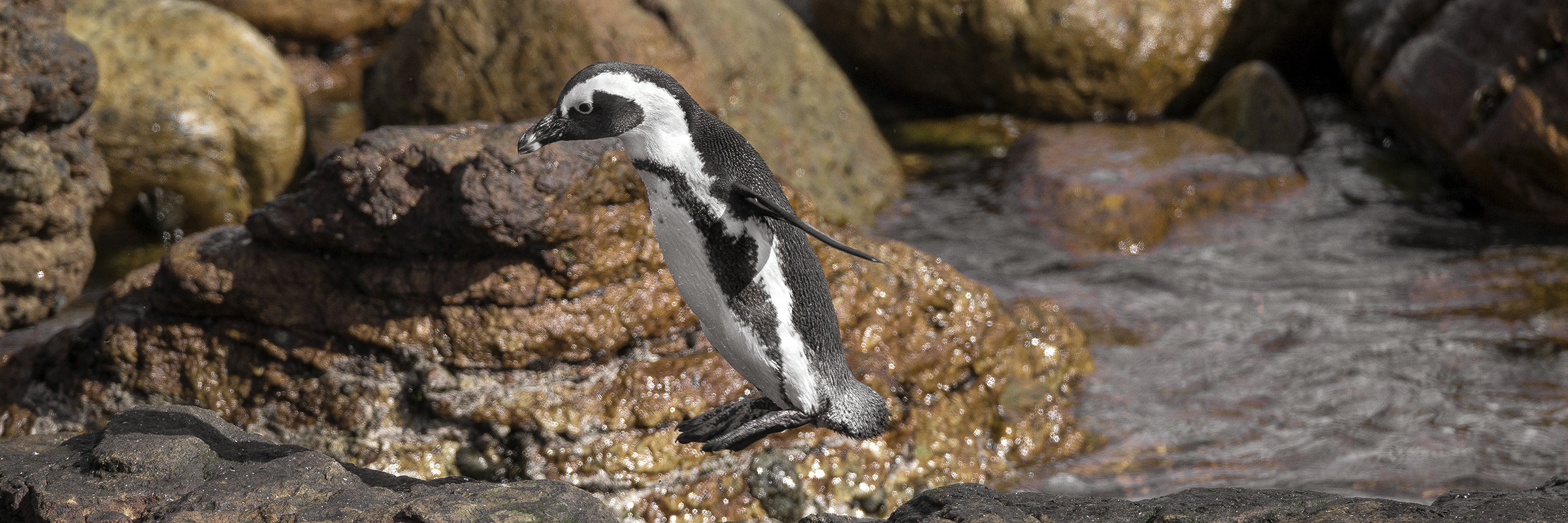
REASON TO HOP
At just over 2 feet tall and weighing 7 to 11 pounds, these flightless birds nest in colonies on the southwestern coast of Africa, as well as 24 rocky islands between Namibia and Port Elizabeth, South Africa. It is the only penguin species native to Africa, and its presence gave rise to the name Penguin Islands. These birds feed primarily on shoaling pelagic fish like anchovies, sardines, horse mackerel, and round herrings, which they catch by swimming swiftly underwater and nab in their pliers-strong beaks. These adaptations were challenging for keepers working at SANCCOB. Despite the penguins’ small size, they are “pure muscle with a strong, hooked beak, so we got pretty bruised and scratched up,” said Ann, although they wore wet suit arm guards and a glove while feeding the penguins several times a day. But for Ann, “it was a dream come true—just a lot harder than I had imagined in my dream,” she said with a laugh.
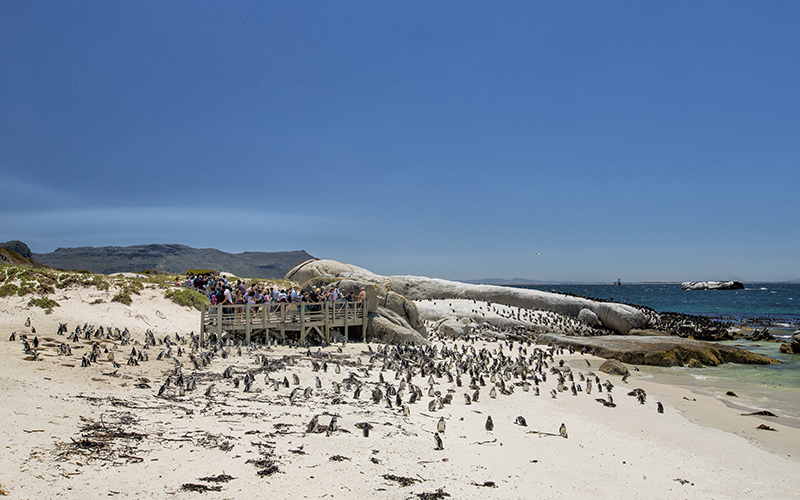
LIFE’S A BEACH
African penguins are social birds that live in colonies.
 Click here to help support the conservation of African penguins by visiting San Diego Zoo Global’s Wildlife Conservancy and donating today.
Click here to help support the conservation of African penguins by visiting San Diego Zoo Global’s Wildlife Conservancy and donating today.
In addition to the predators coming at them from land, sea, and air, the African penguin is also threatened by oil spills and other pollution, habitat destruction, overfishing (which reduces their food source), and climate change (altering the ocean temperature and food availability). A more unusual hazard is the African penguin’s penchant for laying eggs twice a year, with the second clutch coinciding with the parents molting for one to two weeks, which renders them unable to hunt fish in the ocean and feed their chicks (or themselves). SANCCOB staff work in conjunction with colony managers from Cape Nature and South African National Parks to monitor the penguins and the nests, and rescue any birds in distress. These eggs and chicks often require intense intervention to survive, but upon recovery, they will be returned to their natal colony. Working with the committed staff of SANCCOB for nearly a month “deepened my appreciation for penguins and the work SANCCOB does year round,” said Ann. The experience reminded her how valuable keepers can be in situ. “We were given 120 to 170 chicks on the first day, and each had to be fed a ‘penguin milkshake’ through a syringe four times a day, medication given when needed, and their pens cleaned. It was intense!”
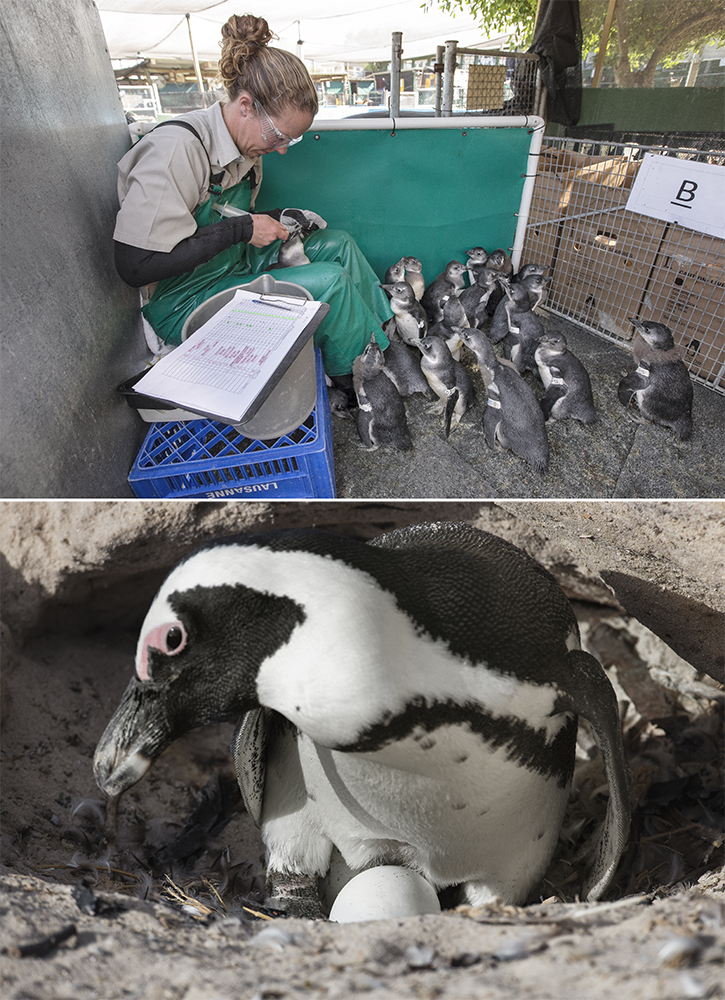
PLEADING PENGUINS
SDZ Keeper Ann Knutson (top) works on feeding and caring for her “flock” of penguins. Below, these animals need guano to pad and insulate their nests on the rocky shore.
Upon hatching, penguin chicks go through phases called P0 (newly hatched) to P4 (over half of their down gone, four to six weeks old) on their way to joining the ranks of “blues,” the stage named for the hue of their juvenile plumage. While some birds may linger at a phase longer than others, the stages are useful for staff so that the birds’ age-specific needs can be better met. “With wild penguins, every chick is important,” said Ann. “Chicks that were getting beat up or neglected wouldn’t be alive without the help of SANCCOB and a legion of volunteers.”
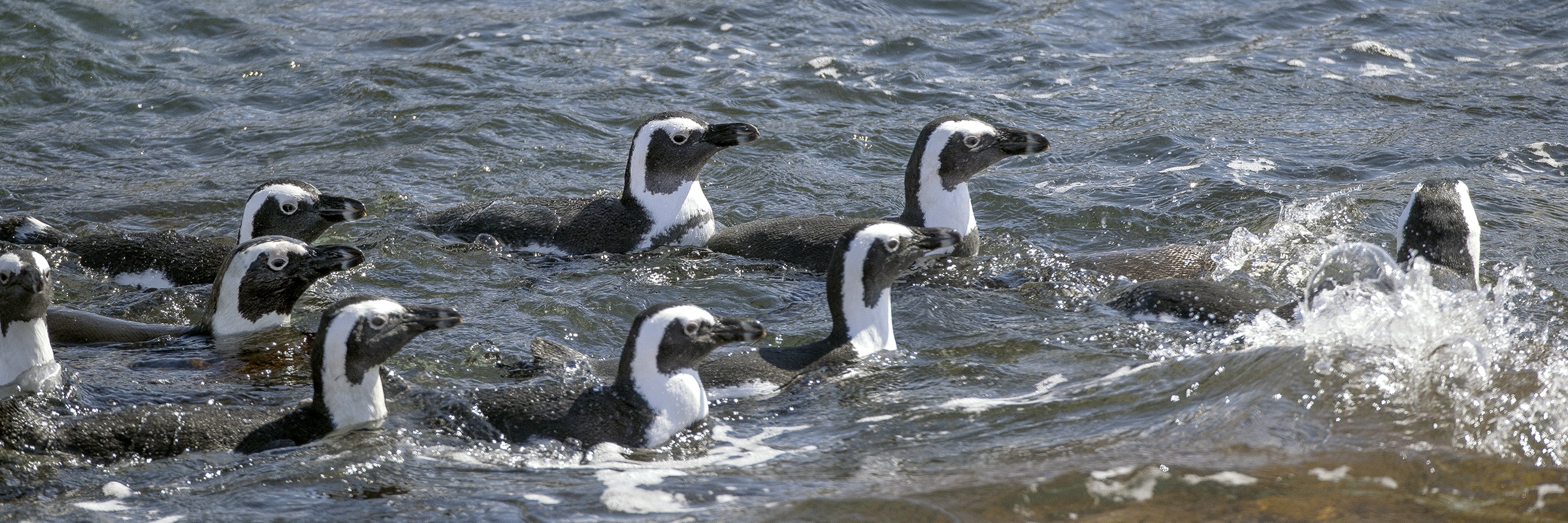
GET YOUR FEET WET
Joop described the information board at the entrance of SANCCOB, showing how many birds they have at any one time. “When we arrived, the board showed 264 penguins, 9 cormorants, 14 seagulls and 1 pelican,” he said. “When we left, there were 338 penguins, 20 cormorants, and 2 pelicans.” Obviously, rehabilitating the birds and releasing them back into the wild is vital, as there are always more coming in. SANCCOB has a modest staff, interns, and a large volunteer base. “People come from all over the world to work there,” explained Joop. “They require at least a six-week commitment, as they have high standards and expectations for the care given to the birds.” This avian labor of love pays off, as the seabirds have a very high survivorship rate after release.
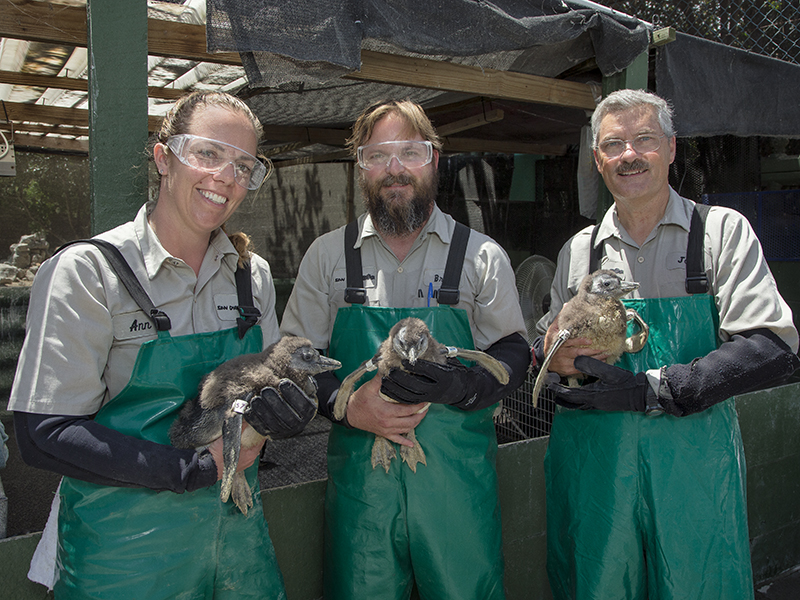
TEAM WORK
The crew from the San Diego Zoo who volunteered at SANCCOB.
As the chicks grow and regain strength, they graduate to a pre-release pen. “They must be at a suitable weight, free of medicinal restrictions, and have developed their waterproof feathers,” said Joop. The birds get an hour-long swim in a pool, and their waterproofing is assessed, as it will be critical out in the ocean. Each bird gets a Passive Integrated Transponder (PIT) tag, so that staff can monitor it after release. Fortunately, the African penguin has a fidelity to colony living—safety in numbers—so released birds are welcomed into the group.
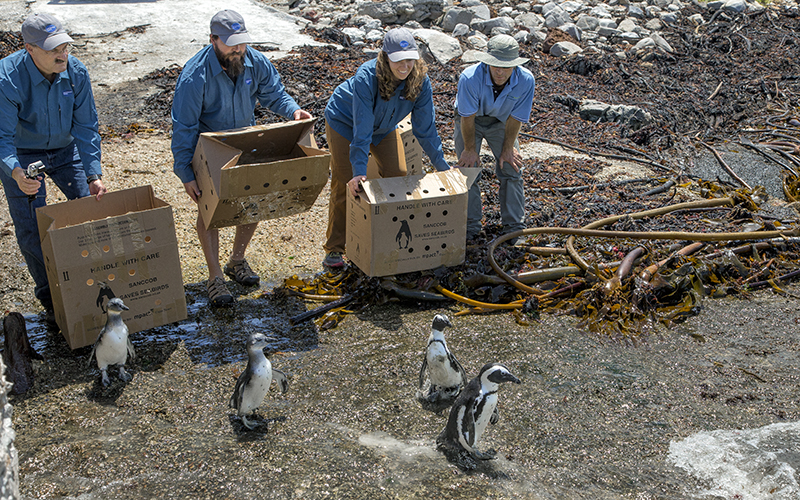
RELEASE DAY
Seven rehabilitated birds were brought back to their natal colony for release.
On Thursdays, release penguins are driven two hours to Stony Point Nature Reserve or Boulders Beach, where they are set free on the shoreline and waddle into the sea. “I was impressed with the dedication of the staff and volunteers to do the hard work it takes to rehabilitate and release these birds,” said Joop. “Not everyone can do it, but those who are doing it are making a huge positive difference for this species.” And that’s a waterproof feather in everyone’s cap!

